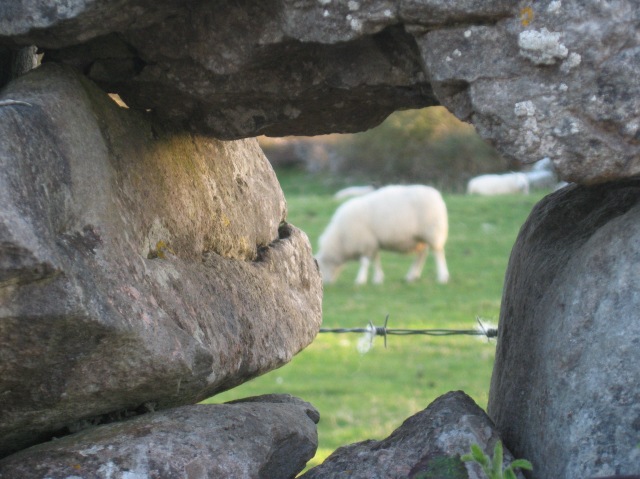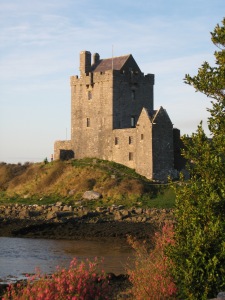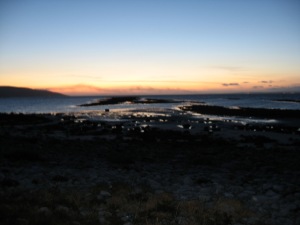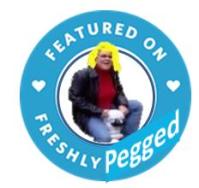“It’s almost 5!” shrieked Peg to Lib
“Call Mary and tell her a fib.”
The castle was great,
But now we were late.
“I won’t lie,” said Squib “I’ll just ad-lib!”
And so we left Limerick.
We made pretty good time heading north out of Limerick because, as previously mentioned, the highways are OK in and out of the big cities. We flew past Bunratty Castle, which turned out to be right next to the highway, not 15 miles inland down some obscure goat-track as is the norm in Ireland. This is a top tourist destination so we were tempted to stop, but remained focused and pressed on.
The road wasn’t very busy, primarily because THE BIG MATCH had started. Soccer is probably the biggest sport in Ireland, as it is everywhere else in the world, but they are also passionate about rugby.
Remember “Braveheart”? Mel Gibson made that movie when he was a big box-office draw, before he made “The Passion of the Christ” and he got buried, professionally, for being religious. In Hollywood it’s OK to be “spiritual” – in fact its downright trendy right now. If its something like the Kabbalah, or Buddhism or Scientology. But you can’t be traditionally religious, especially something like Catholic. People whose life mantra is “I Sure As Hell WILL If I Want To” don’t want to hear all of those pesky “Thou Shalt NOT”s.
Anyway, there’s a scene in “Braveheart” where Mel, as William Wallace, leads a mass of Scottish highlanders into battle in the middle ages. They’re filthy and hairy, their faces painted and wild-eyed, screaming in Gaelic as they run forward clutching spears and axes. They literally collide with the other army and try to hack off one another’s heads, and any other appendages that are handy.
Well, rugby is like that. Without the face paint. I understand they also call this sport football, but its not the same as the American version because they do away with the sissy helmets, padding, rules and such.
On that particular Saturday the all-Ireland team was playing Wales for the World Cup rugby championship. This is a title Ireland hadn’t won for more than 60 years and passions were running high all over the country. Most everyone was hunkered down in front of their tellys.
About 25 miles south of Galway, we spotted the road signs for Kinvarra, which was our destination for the night. The N road we had been on was pretty good – meaning there was room for 2 cars at the same time. Once we turned onto the R class donkey-path to Kinvarra we would fondly reminisce about such modern driving conditions.
It was pretty country with lots of farms. The sun had come out after being overcast in the afternoon. The farms were bordered by tall hedges or stone fences that reached onto the narrow, rutted road. It was slow going for one car, but when someone approached from the other direction we had to find a break in the hedgerow to scoot over and let them pass.
On this particular stretch of road we encountered several impatient Kinvarrians, eager to get home to the game. They would come up fast on our tail, apparently laboring under the misapprehension that 100 kph was a reasonable speed for these roads. They would wait with ill-concealed impatience for the road to widen so they could pass us and roar off.
Even though we were really stressed for time, we couldn’t resist pulling over to take some pictures. Lib got a very artsy shot of grazing sheep through a chink in a stone fence. It’s a perfect juxtaposition of Ireland’s 2 major products – sheep and rocks.
Ireland is home to hundreds of different hues of green. They don’t call it the Emerald Isle for nothing. The fields are blanketed with lush, rolling carpets of green. But we saw very few trees. Ireland’s wealth of forests were all cut down over the centuries to fuel the building needs of England. I don’t think we saw one farm with growing crops. In the springtime in Illinois you drive through a patchwork quilt of crops: miles of corn alternating with soybeans, budding in straight rows of green fuzz against the black earth. Ireland seems to grow only cattle or sheep. Lots and lots of sheep.
We were surprised at how many new, large houses there were on the road to Kinvarra. Some weren’t even done yet. All the houses are made of stone. From a distance, it was hard to tell the partially built stone walls of a new house from the tumbled down remains of an old one. Over the stone they put a coat of stucco.
Every farm or parcel of land is bordered by its own stone wall, even in the towns, (but not in the cities). The newer places have orderly blocks of quarried stone, straight and even. The older homes are bordered by haphazard piles of rocks. Many have the top course mortared to stand upright in a jagged, crenelated pattern; a parapet for everyman’s castle, tall enough only to keep out invading leprechauns.
Lib had called Mary to say we were running late, and it was decided she would pick us up at our B&B at 7, instead of the previously agreed-upon 5:30 (oops!). We rolled into the charming little town of Kinvarra with 10 minutes to get checked in and change clothes.
Mary had recommended Fallon’s B&B, which was above a grocery store. Lib checked it out on the Internet and emailed our hostess, Maura, ahead of time to get everything set up. We couldn’t find a parking spot anywhere on the narrow main street, so I dropped Lib off to get checked in and drove around for precious minutes before settling on a place several blocks away. Kinvarra is a harbor town with the water coming right up near the road, a couple of fishing boats at anchor off the shore. But we had no time to sight see then.
Fallon’s was a surprisingly big place, very clean and fine for our needs. Our room had 2 doubles and one twin bed. We should have sublet the other beds to earn back some of our rapidly dwindling money supply. Since this was the off-season, it wasn’t crowded. In fact, I d0n’t think there was anyone else in the B&B besides us.
We dashed up to the room, used the facilities, threw on our clothes and clambered down to wait in the front hall. As it turned out, we would have had time for a leisurely shower and unpack as Mary was 1/2 hr late. Since we were 1-1/2 hours late, we couldn’t complain. We used the time to study all the family photos Maura had in the hall. She was a widow lady with 6 grown children, and we really got to know all of them as we studied and restudied their wedding photos. When her 20-something daughter walked in the front door I felt I knew her from my intense study of her pictorial history. She looked a little scared by the warm greeting she got from a total stranger.
Once we had decided to visit Ireland, Mom called her cousin, Bernie Nadon, to get some background history for our trip. She found out his daughter lived there and suggested we get together. Her cousin immediately started rolling UP the welcome mat and putting it away.
“Mary isn’t really that up for visitors. She’s had some bad experiences with everyone she knows going over to visit, looking for free lodging and staying for ever.”
Mom was a little miffed – “My daughters don’t want to move in. I thought it would be nice for them to meet their second cousin!”
We got her phone number and Lib called and emailed back and forth as our plans solidified and we decided to meet for dinner one night. Mary mentioned the weekend would be best for her partner, Alex.
“Partner” is one of those ambiguous modern terms that creates more questions than answers. It’s difficult to pin down. It used to be, when someone referred to their partner, they meant the person with whom they were in business. Picture two guys with starched collars and walrus mustaches facing one another sternly over the gleaming mahogany expanse of a two-person desk in a book-panelled law office.
That definition is still probably #1 in Websters, but several alternates are now in common use. The first refers to the person of the opposite sex with whom one is: cohabitating without benefit of clergy, living with, shacking up with. It’s a fiancee without a ring and a date or a significant other. It’s supposed to denote some kind of intimate relationship, without all the fuss and bother of an actual wedding.
“Partner” has also been co-opted by gays to denote some kind of commitment with their inamoratas (or inamoratos, as the case may be).
Alex is one of those sexually ambiguous names that can go either way. Like Pat, Chris, Terry. Remember that Saturday Night Live sketch about Pat, the androgynous guy/gal? Everyone was always trying to figure out his/her sex. Lib was going to try to nose out a little more info about Alex in her emails “so, when dinner is over and we all need to use the bathroom, and the women’s room is occupied…” But we decided that would probably not be polite. Mary used the term partner several times in her conversations, and Lib never could get a sense of what, specifically, she meant. I guess it would also be impolite to just come right out and ask “what do you mean – partner? In what way?”
So Mary’s relationship with her partner could have fit in any one of the three possible categories. We were happy to meet them in any event, so this was only an issue as it relates to the all-important business of pub-going. Let us not forget that was Lib’s main interest in Ireland – going to as many pubs as possible, and meeting a bohunk Irishman. To be fair, she was also interested in local music in a cultural sense, but guys and beer were number one.
We were really looking forward to this evening because it was our one opportunity of the trip to experience small-town life in Ireland, with a guide who knew and could introduce us to the real people. Not just the tourist stuff. Mary’s partner was germain as we speculated, between giggles and groans, that we might be destined to spend the evening with the Irish Lesbian League. Not that there’s anything wrong with that…, but Lib was interested in cavorting with strapping Irish lads, not lasses.
Alex turned out to be a man. A very nice, very tall, rather angular and raw-boned Dane with black glasses. Think Abraham Lincoln, but cuter. Mary is an artist, probably in her late 40s, with long dark hair, curvy and not very tall. She dressed very artistically with a flowing dress, jacket and several scarves. She must have gotten over the visitor-phobia her father mentioned, because she was very warm and welcoming to us. Alex is in engineering/computers. So their partnership was of the roommate variety.
We got in the backseat of their car and headed out for a little tour of the Burren on our way to a fresh seafood restaurant Mary and Alex knew. Getting in the car wasn’t quite that simple, however.
The cars in Ireland are, for the most part, small. We saw some SUVs and I marvelled at their drivers daring, because the roads are narrow. Their car was a 4 door, which was a plus, but did I mention that Alex is tall? Maybe 6’4″? As in all legs? Lib graciously chose to sit behind the driver. The driver’s seat bumped up against the back seat. The process of getting in was much like mounting a horse. Lib had to put her right foot on the door frame and swing her left leg in so that she ended up with her knees on either side of the drivers seat. Real elegant position. It was a good thing she wasn’t wearing a dress.
Mary wanted to show us her favorite place to go for inspiration – to walk, think and paint. The Burren is a wild, bog-filled area in the west. We drove along the edge of the Burren, on the coast of Galway Bay. The beach is layers of rock, very austere and beautiful. By now it was twilight, so it was hard to see. We had, unfortunately, no time for daytime exploration of the area, so we appreciated what we could see.
The peace and beauty of the area washed over us, which would have been very Zen-like if it weren’t for the fact that Lib and I were in a state of abject terror.
Alex drove like a madman. Or like an Irishman. May be a European trait.
His car had a stick shift and we bounced and jostled down the narrow, rutted, curving road as he shifted gears – left handed, I’ll have you know. I had to admire that skill. I absolutely insisted on a manual transmission at Hertz. By now it was full dark, but Alex didn’t let that slow him down. Nothing did. Until we came around a hairpin turn in the middle of nowhere and found ourselves mano a mano with a huge piece of farm machinery, or boring equipment. It had an interesting circular pattern of lights on its front like the spaceship in that Richard Dreyfus movie about the people from all over the country who all have this same intergalactic top 40 song stuck in their heads – what was it? Oh yeah, Close Encounters of the 3rd Kind.
By the way, we figured Ireland must have some kind of agriculture because we kept coming upon slow-moving farm machinery in the roads.
With an amazing display of testosterone, Alex figured he could take this 2 story, alien earth moving machine. There wasn’t anywhere to turn around, so he proceeded, squeezing as far to the left as possible and going very slowly.
We got stuck.
There was absolutely no room to maneuver. His right side mirror was being bent back and if we went forward, it would snap off and we would be wedged against the metal behemoth.
Now, Mary and Alex may have decided against “Marriage” as a bourgeois institution, but they must have seen the movie because they knew the dialogue:
Scene II: Set on a dark, narrow country road. Small, battered Honda containing 4 passengers comes around curve. A large, farm machine appears suddenly from the opposite direction. Both vehicles slow, but proceed.
MARY: “Alex, I think you need to back up or something.”
ALEX (in Scandinavian accent): “No, I have room.”
MARY: “Are we supposed to yield? Is there somewhere to turn around?”
ALEX (downshifts and bounces through rut. Tone now more stern): “It is alright Mary, we can get through.”
MARY (nervous titter and look over shoulder at interested passengers, says sweetly): “Honey, I really don’t think we can both fit.”
(sound of screaming metal on metal fills the car, fade to black.)
Anyway, the other guy just stopped, Alex somehow backed up and edged around with the side mirror bruised but still attached. We proceeded on and arrived at the restaurant in one piece.
TTFN,
Love,
Peg












BRAVO on the limerick- how clever mumsy! how long are you spending on these blogs, anyways? that limerick musta taken you 20 min!
LikeLike
How clever of you to notice, dear Biz! I was going to insert – “It’s a limerick, like the town, get it?” But my admiration for my family knows no bounds, so I trusted the reader would get it without being bludgeoned.These blogs are taking much too long to compose, tis true, but the limerick came to me while on the treadmill.
LikeLike
This story was just rampant with good stuff. First the limerick, which made me chuckle, the comment about Ireland having two products (right on, by the way), and rugby. Oh, rugby is the nastiest of all contact sports. Thank goodness I don’t have strapping young Irish lads who want to take up the sport (like my Irish friend Fiona has got…she pushed hers to soccer, er, uh…football instead).
I’m enjoying the reads, Peg. Thank you so much for sharing! I must send a phone call to my dear Fiona tomorrow. I miss her.
LikeLike
PS — I’m glad you got out alive with the tractor-thingy. Harrowing! I must share my bus story someday from downtown Malacca (Malaysia). It was as close to death as I’ve ever been.
LikeLike
Pingback: We Go to Ireland | Peg-o-Leg's Ramblings